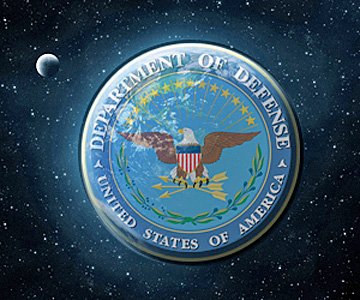
[SatNews] The Department of Defense has publicly released details on major defense acquisition program cost, schedule, and performance changes since the December 2012 reporting period.
This information is based on the Selected Acquisition Reports (SARs) submitted to the Congress for the December 2013 reporting period.
SARs summarize the latest estimates of cost, schedule, and performance status. These reports are prepared annually in conjunction with submission of the President's Budget. Subsequent quarterly exception reports are required only for those programs experiencing unit cost increases of at least 15 percent or schedule delays of at least six months. Quarterly SARs are also submitted for initial reports, final reports, and for programs that are re-baselined at major milestone decisions.
Nunn-McCurdy Unit Cost Breaches for 2013
For the December 2013 reporting period, there are four programs with critical or significant Nunn-McCurdy unit cost breaches to their current or original Acquisition Program Baseline. In accordance with the provisions of sections 2433 and 2433a of title 10, United States Code, the Department will notify Congress and provide the required unit cost breach information in the SARs for these four programs. In addition, for the two of these programs with critical breaches, a certification determination by the Undersecretary of Defense for Acquisition, Technology and Logistics will be made no later than June 17, 2014, as required by law.
Critical Breaches: (Unit cost increases of 25 percent or more to the current APB or of 50 percent or more to the original APB)
- Joint Tactical Radio System Handheld, Manpack, and Small Form Fit Radios (JTRS HMS)–
The PAUC increased 20.0 percent and the APUC increased 19.2 percent above the current APB, due to a revision in the acquisition strategy for full rate production (including a change from a single vendor per radio to multiple vendors per radio), vehicle integration requirements not previously identified as a funding responsibility of the program, and a change in the Army fielding strategy that fields fewer radios per year.
U.S. Army
- Warfighter Information Network-Tactical (WIN-T) Increment 2– Program costs increased $8,969.9 million (+174.6%) from $5,137.4 million to $14,107.3 million, due primarily to a quantity increase of 3,167 nodes from 2,100 to 5,267 (+$6,206.3 million), which reflected the procurement of additional training base assets and a transfer of Army assets from WIN-T Increment 3 to WIN-T Increment 2. There were additional increases in support for fielding, new equipment training, software maintenance, and initial spares resulting from the quantity increase of 3,167 nodes (+$3,015.9.0 million). These increases were partially offset by the elimination of radio antenna requirements (-$316.6 million).
- Warfighter Information Network-Tactical (WIN-T) Increment 3– Program costs decreased $14,174.6 million (-79.2%) from $17,890.1 million to $3,715.5 million, due primarily to a quantity decrease of 2,814 nodes from 3,513 to 699 (-$10,015.3 million) and associated schedule, engineering, and estimating allocations* (+$2,003.6 million). There were also decreases related to fewer quantities of high cost configuration items being procured (-$905.9 million) and reductions in fielding, new equipment training, hardware end of life (technology refresh), and initial spares resulting from the quantity decrease of 2,814 nodes (-$5,692.6 million).
U.S. Air Force
- Evolved Expendable Launch Vehicle (EELV)– Program costs decreased $3,062.7 million (-4.3%) from $70,685.1 million to $67,622.4 million, due primarily to savings realized in the negotiation and award of the new 2013-2017 Phase 1 contract (-$3,770.7 million), revised cost assumptions based on the negotiated contract (-$1,511.5 million), and net decreases from a change in launch vehicle configuration requirements (-$411.3 million). These decreases were partially offset by a quantity increase of 11 launch services from 151 to 162 (+$2,505.0 million).
- MQ-9 Reaper Unmanned Aircraft System (MQ-9 Reaper)– Program costs decreased $1,451.8 million (-10.9%) from $13,318.2 million to $11,866.4 million, due primarily to a quantity decrease of 58 aircraft from 401 to 343 (-$962.1 million), associated schedule, engineering, and estimating allocations*(+$66.9 million), and a reduction of initial spares and support equipment related to the decrease in quantity (-$432.9 million). There were additional decreases for the removal of the Airborne Signals Intelligence payload 2C (ASIP 2C) requirement (-$280.1 million) and sequestration reductions (-$142.5 million). These decreases were partially offset by increases for a warfighter requirement for extended range retrofits and communications requirements (+$138.9 million) and the addition of production line shut down costs that were not previously estimated (+$132.7 million).
- Space Based Infrared System High (SBIRS High)– Subprogram costs for the Block Buy (GEO 5-6) decreased $460.9 million (-11.9%) from $3,869.3 million to $3,408.4 million, due primarily to a reduced estimate to reflect a fixed price contract proposal for GEO 5-6 (-$362.4 million) and Congressional and sequestration reductions (-$118.5 million).
The full DoD report may be accessed at http://www.defense.gov/Releases/Release.aspx?ReleaseID=16644

